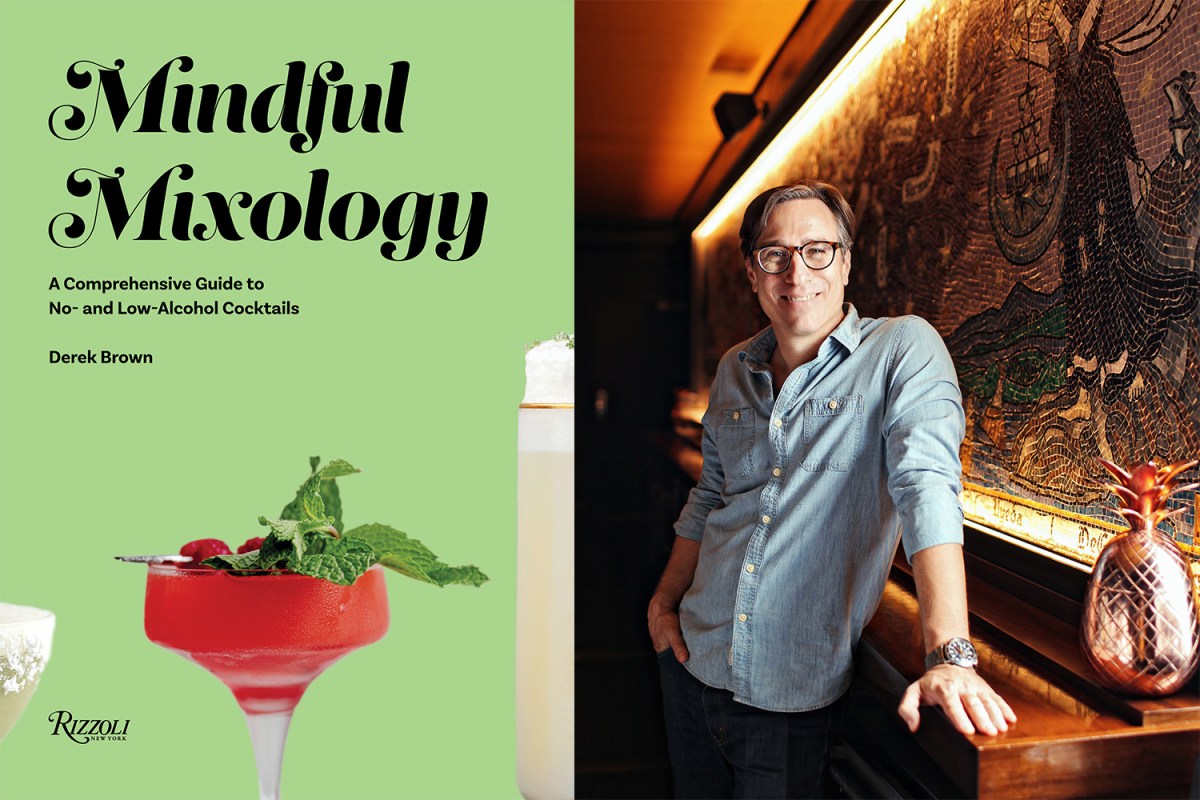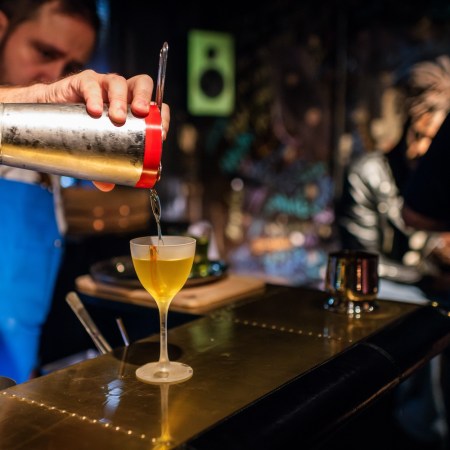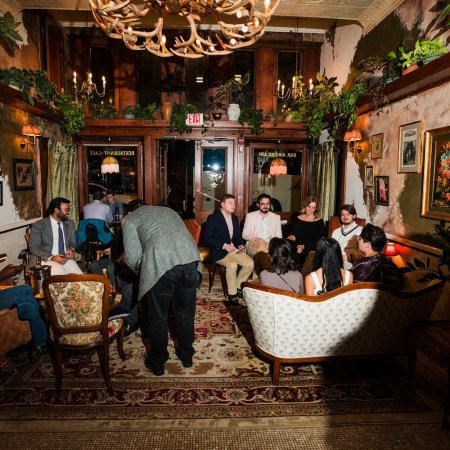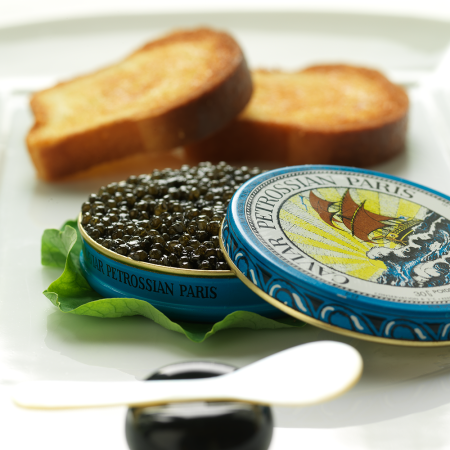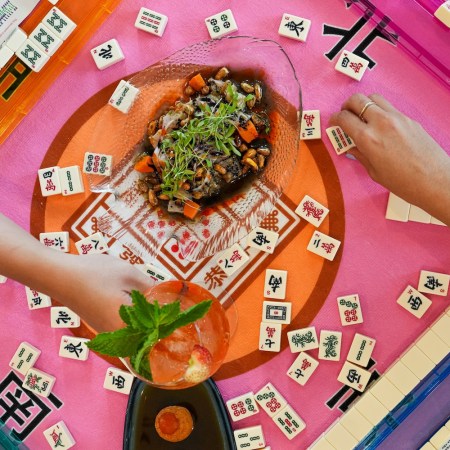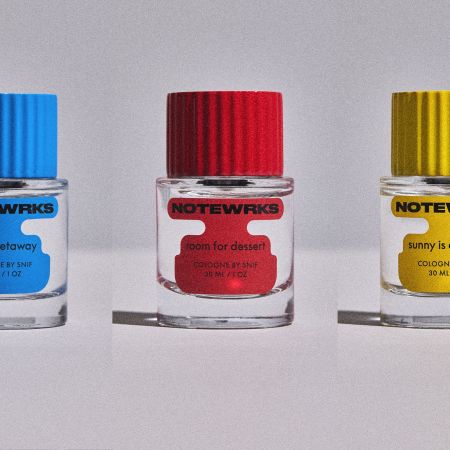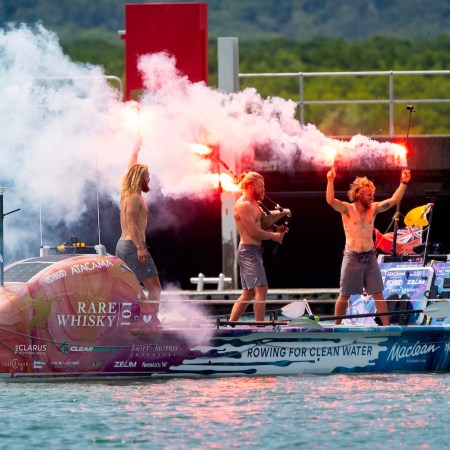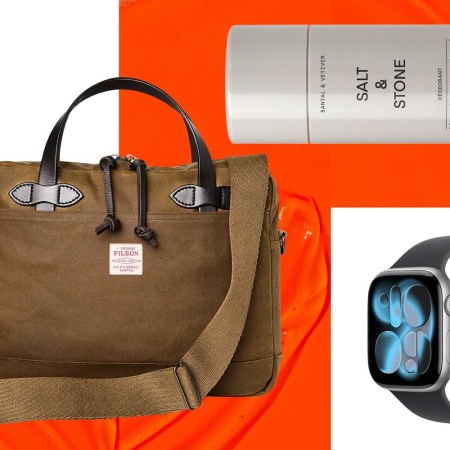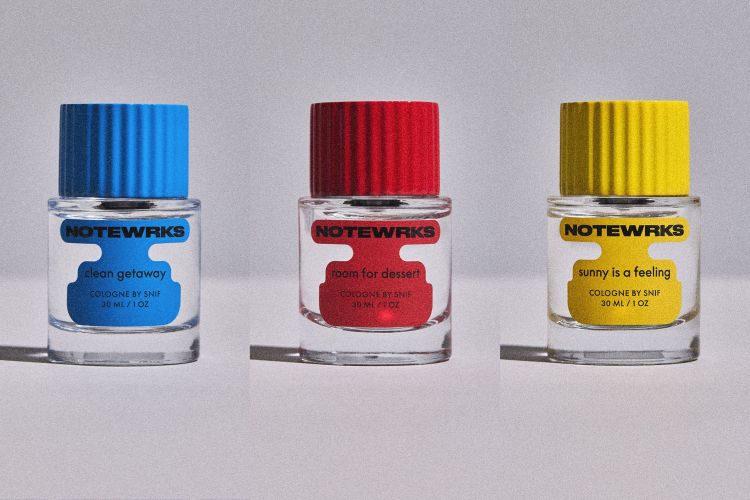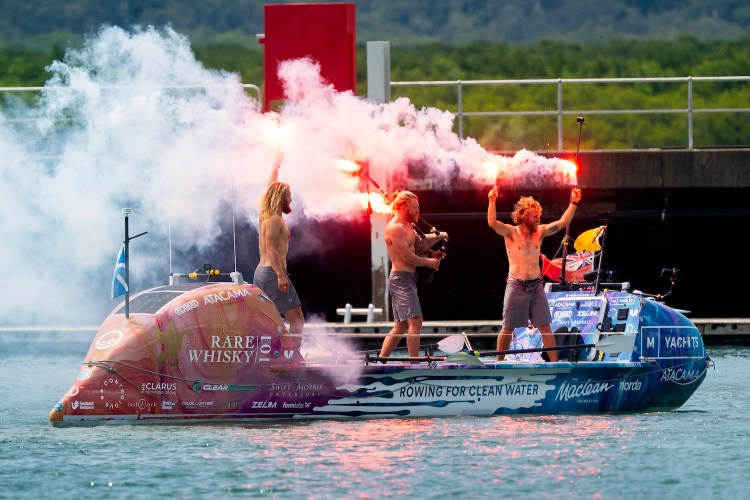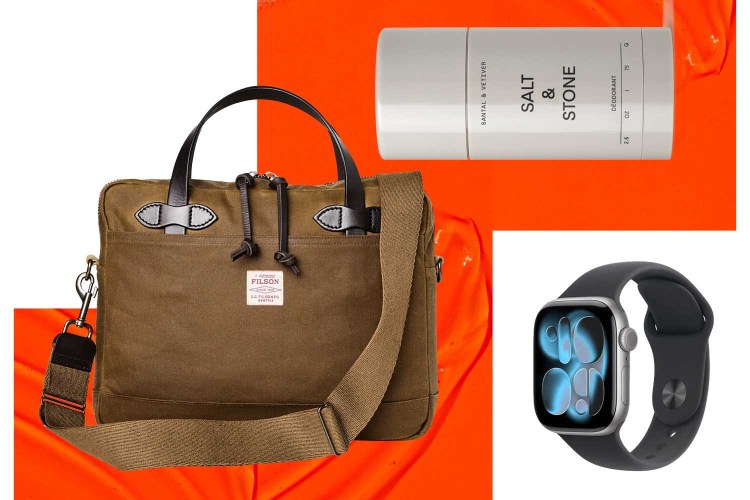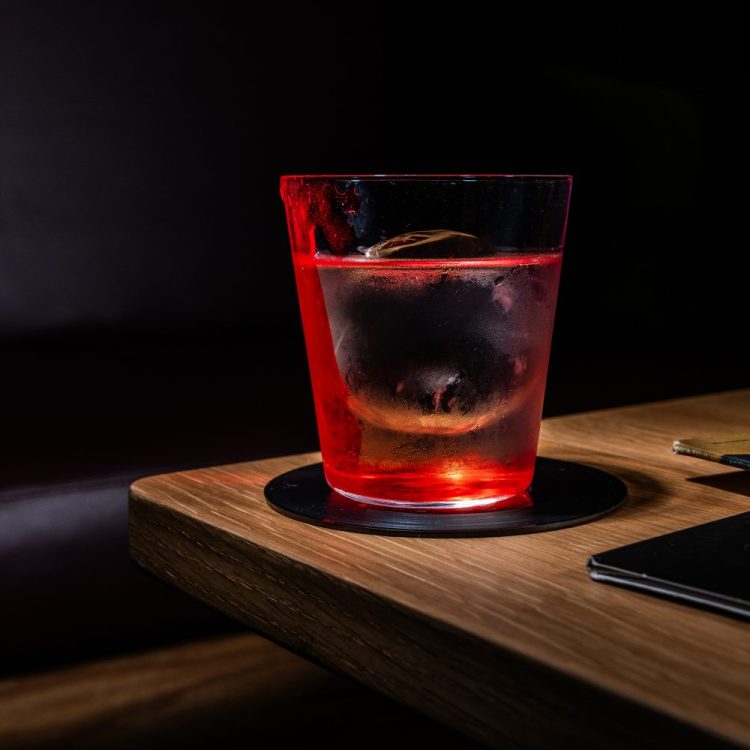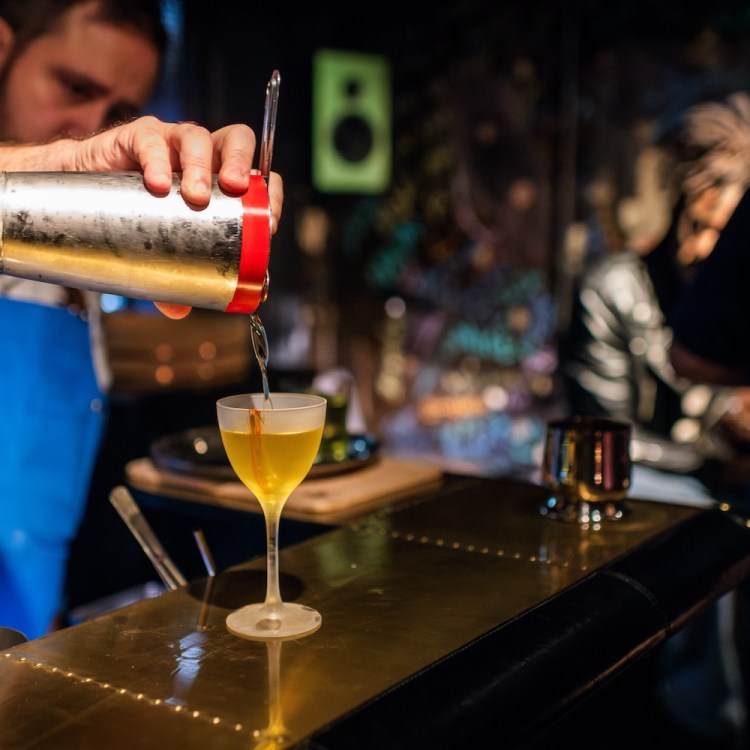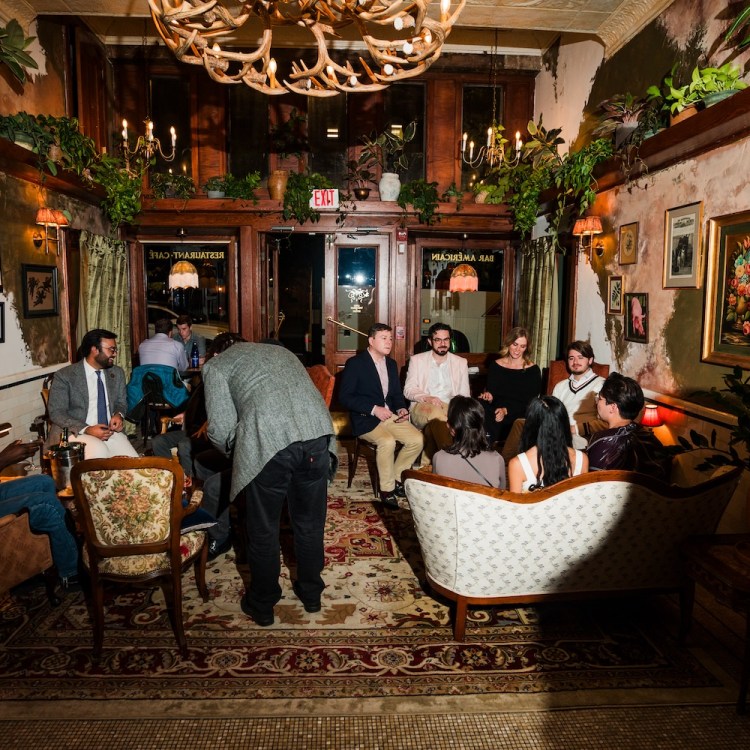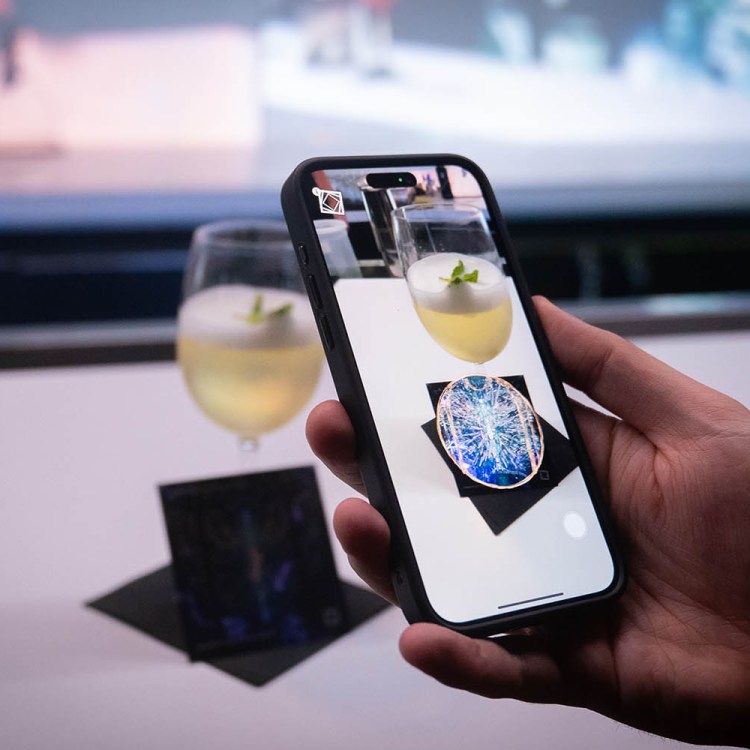For more than a decade, a conversation about world-class cocktails in Washington, D.C. has inevitably mentioned Derek Brown. The bartender, bar proprietor and writer has been one of the key figures in the city’s cocktail culture, whether reviving classic cocktails at Columbia Room or crafting pop culture concoctions at Drink Company’s impossibly popular pop-ups (RIP).
During that time, making and serving drinks has been Brown’s profession and his passion. But while alcohol had been at the center of the best experiences of his life, he says, it was also responsible for some of his worst. When he took a personal inventory a few years back, the needle had swung from black to red.
“I started to feel like the good times were outweighed by the bad times, and a lot of aspects — whether my relationships, or my finances, or my health — all of those were strained,” he says.
Eventually, Brown stopped drinking, so he could better focus on his family and his well-being. But he hasn’t changed his vocation — just adapted it.
In recent years, Brown has become an evangelist for no- and low-alcohol cocktails. Along with putting them on his menus, he published a book in January on the topic, Mindful Mixology. The “mindful” title plays off the word’s dual meanings: being wary of potential dangers, but also the awareness of our relationship to ourselves and the world around us that illuminates the mindfulness movement.
To the latter point, Brown once took a course based on Jon Kabat-Zinn’s “Mindfulness Based Stress Reduction Training” about how to encounter new things with a sense of curiosity — a wonderful skill in the food and drink world. During one exercise, he had to mindfully eat a raisin.
“The idea of mindfully eating this little shriveled grape doesn’t sound very appetizing. But you’re supposed to approach it without judgment, so you sit there and you eat it as though you’re eating it for the first time,” he recalls.
While he didn’t learn anything about the food itself (“Raisins are pretty much trash and I think most people know that”), the experience did make him realize that every time he takes a bite of something, he’s already wondering about the next bite. The same phenomenon applies to how many people down cocktails: a patron could be fantasizing about a negroni before finishing their Manhattan, detracting from both drinks.
But Brown stresses that a course in mindfulness is not a prerequisite for his book, which he compares to an “undergraduate degree” in the subject.
“I don’t want to overwhelm people by saying to read my book you have to meditate,” Brown says. “All you have to do is learn how to make delicious non-alcoholic and low-alcohol cocktails.”
While his last book, Spirits Sugar Water Bitters, focused on the four elements of traditional cocktails, Mindful Mixology examines the sensory aspects of all cocktails, with alcohol or without, including intensity of flavor, mouthfeel and piquancy. Go-to ingredients include ginger, apple cider vinegar, salt tincture, and aquafaba — the water in a can of chickpeas.
“You just start to pick from your cabinet all these different things that you can put in the mix,” he says.
Mindful mixology is no longer a niche interest, off to the side like the kids’ menu. Cocktail drinkers — who are increasingly seeking different options as tastes and tolerances change — are leading the way, and bars that offer a wider range of cocktails give customers better control over their experience and how they feel either that night or in the morning. And even though he isn’t drinking these days, there’s no value judgment from Brown.
“These are sophisticated adult cocktails. They’re delicious. They’re made with as much care [and] sometimes as much expense, and you don’t have to compromise on that because you want to feel differently than somebody else,” he says.
Columbia Room closed permanently on Feb. 11, but Brown is continuing his vocation at what he calls a “dream job:” director of education at Spiritless, a company that makes a distilled, non-alcoholic bourbon called Kentucky 74.
“I’d like to present something positive to the world to help people in this complicated, sometimes challenging life. I’m there trying to help, always,” he says. “Being a bartender was helpful — being an educator on non-alcoholic spirits is hopefully helpful, as well.”
The NA Getaway
Makes 1 drink
- 2 ounces Chinotto syrup (available online or in specialty stores)
- 1 ounce fresh lemon juice
- ½ ounce maple syrup
- ½ teaspoon apple cider vinegar
- ½ ounce aquafaba (see below)
- 6 drops of salt tincture (see below)
To prepare the salt tincture:
To make salt tincture, simply add 4:1 water to salt and shake until the salt dissolves. Use a good salt like Maldon. Transfer the tincture to a dasher or eye dropper bottle. You may also use a pinch of salt here or a pinch there, but the tincture blends easier and can be stored for up to a month in a refrigerator.
To prepare the aquafaba:
Chickpea water. From a can of chickpeas. Simply open the can and strain the liquid. (Use the chickpeas for a salad or hummus.)
To make the drink:
In a shaker, combine all ingredients with ice and shake vigorously. Remove ice and dry shake. Strain liquid into cocktail glass.
Serve in a cocktail glass
This article was featured in the InsideHook DC newsletter. Sign up now for more from the Beltway.
